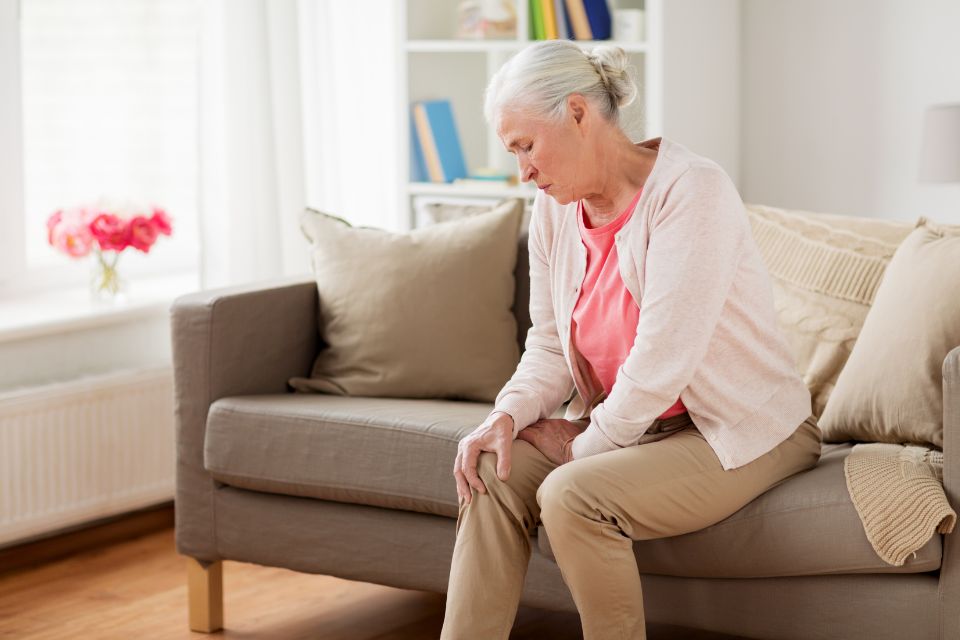

When it comes to managing pain in older adults, understanding the full scope of the issue is crucial. Pain is not simply an uncomfortable sensation; it’s a complex experience that can have far-reaching effects on an individual’s physical health, mental well-being, and overall quality of life. As we age, our bodies undergo changes that can make us more susceptible to pain, and often, the pain experienced by seniors is chronic and persistent, necessitating a thoughtful and comprehensive approach to management.
Key Takeaways
- Pain is common in older adults, but it is not a normal part of aging.
- Chronic pain can lead to significant physical and psychological consequences, including depression and decreased mobility.
- Effective pain management requires a personalized approach, taking into account the unique circumstances of each individual.
- There are a variety of strategies to manage pain in seniors, from pharmacological treatments to non-pharmacological therapies.
- Open communication with healthcare providers and the support of caregivers are essential components of successful pain management.
Understanding Pain in Golden Years
Let’s clear up a common misconception: pain is not an inevitable part of getting older. Sure, with age comes a higher likelihood of health issues that can cause pain, but that doesn’t mean seniors have to live with it. Recognizing that pain is a sign that something isn’t right is the first step in addressing it effectively.
Prevalence of Pain in Older Adults
Did you know that a significant number of seniors live with chronic pain? Studies suggest that up to 76% of older adults in community settings report experiencing some form of persistent pain. This high prevalence underscores the need for awareness and proactive management strategies to alleviate suffering and improve life quality.
Common Pain Triggers in Seniors
Pain in seniors can stem from a variety of conditions, such as arthritis, osteoporosis, and neuropathies. Besides these, previous injuries or surgeries can flare up, causing discomfort that ranges from mild to debilitating. Understanding these triggers is essential for tailoring a pain management plan that works.
Impact of Pain on Senior Health
Pain doesn’t just hurt. It can have a domino effect on a senior’s health, leading to issues like trouble sleeping, reduced appetite, and difficulty with everyday activities. Most importantly, it can lead to a downward spiral of decreased mobility, as the pain makes it harder to stay active, and inactivity can make the pain even worse.
Physical Consequences: Immobility and Discomfort
Imagine waking up every day with pain that makes even the simplest tasks feel insurmountable. For many seniors, this is their reality. Pain can lead to a fear of movement, which in turn can cause muscles to weaken and balance to falter, increasing the risk of falls and injuries. It’s a cycle that can rob seniors of their independence.
But it’s not just about the big things. Pain can take the joy out of life’s little pleasures—like playing with grandchildren or gardening. That’s why addressing it is so crucial.
Mental Health: The Link Between Pain and Depression
There’s also a strong link between chronic pain and mental health. Persistent pain can be demoralizing and isolating, contributing to the development of depression and anxiety. Therefore, a holistic approach to pain management—one that addresses both the physical and emotional aspects—is key to improving overall well-being.
When Pain Persists: Recognizing the Signs
How do you know when pain is more than just a fleeting annoyance? Chronic pain often sticks around for longer than three months and can range from a dull ache to a sharp jab. Recognizing the signs of chronic pain is the first step toward getting the right treatment.
Identifying Chronic Pain
Chronic pain can be sneaky. It might start as an occasional discomfort that becomes more frequent over time. Or it might be a constant companion that varies in intensity. Either way, it’s important to take note of how pain is affecting daily life. Are hobbies becoming less enjoyable? Is sleep being disrupted? These are clues that it’s time to seek help.
Difference Between Acute and Chronic Pain
It’s also important to understand the difference between acute and chronic pain. Acute pain is the body’s immediate response to injury or illness—it’s sharp and severe but typically short-lived. Chronic pain, on the other hand, persists long after the initial injury has healed. It’s less about the body’s alarm system and more about the nervous system getting stuck in a loop.
Personalizing Pain Management Strategies
Every person’s experience with pain is unique, which means there’s no one-size-fits-all solution. The best pain management plans are tailored to the individual, taking into account their specific conditions, preferences, and lifestyle.
- Non-Pharmacological Approaches: These include physical therapy, exercise, acupuncture, and relaxation techniques.
- Pharmacological Treatments: From over-the-counter options like NSAIDs to prescription medications, understanding the benefits and risks is crucial.
Let’s delve deeper into each of these strategies.
Non-Pharmacological Approaches
Let’s start with methods that don’t involve medication. Non-pharmacological approaches are the cornerstone of pain management for many seniors. These techniques focus on alleviating pain through physical activity, mind-body therapies, and lifestyle modifications, rather than relying solely on medications. They often serve as the first line of defense and can be incredibly effective in managing chronic pain.
Physical Therapy and Exercise
Physical therapy is a powerful tool in the fight against pain. A physical therapist can tailor exercises to strengthen muscles, improve mobility, and reduce discomfort. But exercise isn’t just about formal physical therapy sessions. Gentle activities like walking, swimming, or tai chi can keep joints flexible and muscles strong, which is vital for pain prevention and relief.
Moreover, exercise triggers the release of endorphins, the body’s natural painkillers. These feel-good hormones boost mood and provide natural pain relief, which is especially beneficial for seniors dealing with chronic discomfort.
Stress Reduction and Mindfulness Techniques
Stress can exacerbate pain, so learning to manage it is key. Mindfulness techniques like meditation, deep breathing exercises, and yoga can help seniors stay present and reduce stress levels. These practices not only promote relaxation but also enhance one’s ability to cope with pain when it arises.
Pharmacological Treatments
While non-pharmacological methods are important, sometimes medications are necessary to manage pain effectively. It’s all about finding the right balance and using medications judiciously to minimize side effects while maximizing relief.
Over-the-Counter Medications and Risks
Over-the-counter (OTC) pain relievers like acetaminophen and ibuprofen are commonly used by seniors. However, it’s crucial to use them carefully, as they can interact with other medications and have potential side effects, especially with long-term use. Always consult with a healthcare provider before starting or changing any OTC medication regimen.
Understanding Prescription Pain Relievers
When OTC medications aren’t enough, doctors may prescribe stronger pain relievers. These can include opioids, which must be used with caution due to the risk of dependence and other serious side effects. It’s essential to follow the doctor’s instructions precisely and communicate any concerns or side effects experienced.
Working with Health Care Providers
Successful pain management is a team effort. Working closely with healthcare providers ensures that pain is addressed effectively and safely. This partnership allows for regular monitoring and adjustments to the pain management plan as needed.
Effective Communication with Your Doctor
When discussing pain with a doctor, it’s important to be as specific as possible. Describe the pain’s location, intensity, and character (sharp, dull, throbbing). Also, mention what makes it better or worse. This information helps the doctor understand the pain’s impact and tailor the treatment accordingly.
Navigating Treatment Options and Plans
Navigating the myriad of treatment options can be daunting, but a clear and open dialogue with healthcare providers can simplify the process. Together, you can develop a comprehensive plan that may include a combination of medications, therapies, and lifestyle changes to manage pain effectively.
Creating a Supportive Environment
A supportive environment plays a crucial role in pain management for seniors. Having a network of caregivers, family members, and friends can provide the emotional and practical support needed to manage pain on a daily basis.
The Role of Caregivers in Pain Management
Caregivers are often the first to notice changes in a senior’s pain levels or behavior. They can help keep track of medications, accompany seniors to appointments, and assist with exercises and other therapies. Their support is invaluable in maintaining a consistent pain management routine.
Leveraging Community Resources for Support
- Local senior centers often offer exercise classes designed for older adults.
- Support groups provide a space for sharing experiences and coping strategies.
- Community health programs may offer educational workshops on pain management.
Utilizing these resources can provide additional layers of support, making pain management a more communal effort.
The Future is Now: Innovations in Pain Management
In the realm of pain management, innovation is key. Advancements in medical technology and pharmaceuticals are paving the way for new treatments that can offer relief with fewer side effects. For instance, the development of targeted drug delivery systems allows for medication to be administered directly to the area of pain, reducing the risk of systemic side effects.
Advancements in Medical Technology
From wearable devices that provide electrical stimulation to block pain signals to smartphone apps that help manage pain through meditation and mindfulness, technology is offering new ways to tackle pain. These innovations are particularly exciting because they offer non-invasive, non-pharmacological options that can be used alongside traditional treatments.
Breaking Ground with New Pharmaceutical Treatments
Research is also leading to the development of new pharmaceuticals that target pain pathways more precisely, with fewer risks than traditional opioids. These new medications promise to provide effective pain relief while minimizing the potential for addiction and other harmful side effects.
Living Better with Less Pain
Living with less pain is not just a dream; it’s an achievable goal. By making simple lifestyle adjustments, seniors can significantly reduce their pain levels and enhance their quality of life. Staying active, maintaining a healthy diet, and getting adequate sleep are all foundational steps in managing pain.
Simple Lifestyle Adjustments for Pain Relief
Something as simple as setting up a daily routine that includes gentle exercise, relaxation techniques, and social activities can make a big difference. It’s about creating a balanced lifestyle that supports overall health and well-being, which in turn can help to manage pain.
Pain Management Success Stories
“After years of living with chronic knee pain, I finally found relief by combining physical therapy with a daily walking program and mindfulness meditation. It’s changed my life.” – Margaret, 72
Frequently Asked Questions
How Can I Tell If My Pain Is Normal or Serious?
If pain persists for more than a few days, interferes with your daily activities, or is accompanied by other symptoms like swelling or redness, it’s important to consult a healthcare provider. They can help determine the cause of your pain and the best course of action.
Are There Alternative Medicines That Help With Pain in Seniors?
- Acupuncture has been shown to be effective for certain types of pain, such as osteoarthritis and headaches.
- Herbal supplements, like turmeric and ginger, may have anti-inflammatory properties that can help with pain relief.
- Always discuss any alternative treatments with your healthcare provider before starting them to ensure they’re safe and appropriate for your situation.
What Should I Do If My Pain Medication Is Not Working?
If your pain medication isn’t providing relief, don’t just increase the dose on your own. Talk to your doctor about your symptoms. They may need to adjust your medication, add a new treatment, or explore other causes for your pain.
How Often Should I Review My Pain Management Plan with My Doctor?
It’s a good idea to review your pain management plan with your doctor at least once a year, or whenever there’s a significant change in your pain or overall health. This ensures that your plan stays up-to-date and continues to meet your needs.
[/fusion_text][/fusion_builder_column][/fusion_builder_row][/fusion_builder_container]






Recent Comments